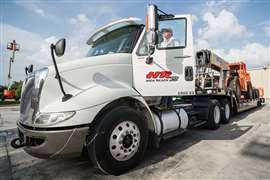5 takeaways from United Rentals recent financials
05 February 2025
The recent quarterly and full year results for United Rentals presented a good opportunity to dig into some of the details on strategy and market conditions, with CEO Matt Flannery and CFO Ted Grace providing guidance to financial analysts.
Here are some of the takeaways:
1. Prospects for 2025 and Trump’s executive orders
United said it thinks the market is in a slower growth phase of the business cycle, but it remains optimistic.
It’s full year revenue expectation for 2025 is in the $15.6 billion to $16.1 billion, which implies growth at the midpoint of around 3.3%. If you account for the $1.45 billion of revenue likely to be generated by used equipment sales in 2025 – less than in 2024 – that would mean core rental revenue growth in the mid-single digit percentage.
The company said; “we expect 2025 to be another year of growth, again, led by large project growth. Customer optimism, backlogs and feedback from our field team, combined with the demand we’re carrying into the new year, all support our guidance.”
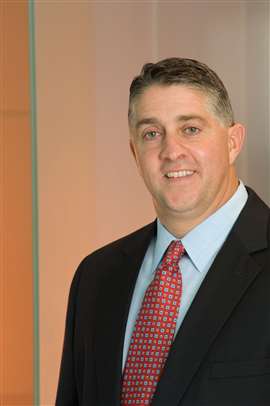 Matt Flannery, CEO, United Rentals.
Matt Flannery, CEO, United Rentals.
Looking at the different sectors, it said it expected similar trends to 2024, with non-residential growth helping to fuel construction and industrial growth driven by manufacturing and power; “And we saw new projects across data centres, chip manufacturing, sports stadiums and power to name a few.”
 Battery energy storage system in United rentals fleet. (Image: United Rentals)
Battery energy storage system in United rentals fleet. (Image: United Rentals)
On major projects, Matt Flannery, CEO, said; “we feel good about this segment and certainly feel good about our alignment to serving that part of the business. So, I would call it overall, the whole demand environment, very similar to what we experienced in 2024 and our guidance. So, we feel good about the year going forward.”
Asked about the new Trump administration, Flannery said the company was not going to overreact to the “news cycle of the day”, but that United’s connection to its customers and their business sentiment gave it confidence for the year.
On presidential executive orders, Ted Grace, United’s CFO, said there had not been too much of an impact; “I do think at the end of the day, you look at our customers, you look at their sentiment, I would say it’s improved since the election.
“And I think that’s people’s perception that you’ve got a government that’s going to be pro-growth, wanting to invest in America. They’ve been pretty clear about that. Certainly, our customers are well positioned to support that growth and we’re well positioned to support them in that endeavour.”
Flannery added; “I would say, generally, some markets have more growth opportunities than others, no different than in 2024, whereas the previous year we had talked so much about broad-based [activity]. We’re really selecting who we want to send the fleet to, not who didn’t need it.
“The great thing about our model and really the rental model overall is the fungibility [the ability to move and exchange assets] of these assets, not just from a vertical but from a geography. And that’s what we’re doing. And I think we do it pretty effectively, which is why we were able to keep these high levels of time utilization over the past two years and we expect to do the same this year.”
2. Another big spending year for fleet
It is inevitable when you have an equipment fleet valued at more than US$21 billion (at original cost) that your annual spending on fleet replacement and growth will be extremely high.
Even so, the forecast $3.65 billion to $3.95 billion gross spending for 2025 still manages to astonish. It indicates how big a customer United has become for many suppliers – particularly in the aerial platform sector - and how important their growth plans are for the wider supply chain.
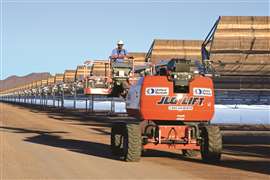 Aerials make up a significant proportion of United’s annual fleet spend. (Photo: United Rentals)
Aerials make up a significant proportion of United’s annual fleet spend. (Photo: United Rentals)
That spending represents renewal investment of around $3.3 billion, plus growth CapEx of approximately $500 million.
These spending forecasts are slightly up on what the company did in 2024, which indicated how it is feeling about the market (and these numbers do not include the addition of H&E.)
Matt Flannery told analysts; “we had really strong utilization of our fleet. And we think the demand environment is going to remain similar. So, no reason to pull back on anything.”
He added; “we plan to sell about $2.8 billion worth of OEC this year. The replacement on that - if you think about the equipment that we bought 8 years ago, it is about 20% more [expensive] now - will be about $3.3 billion.”
He also said that the specialty segment will receive “more than its fair share of that”.
One notable set of figures concerns the sale of used equipment. United sold $850 million of fleet (at original cost) in the final quarter of 2024 alone – a record for the company – and generated $452 million in revenue.
That represents a “recovery rate” of 53% on equipment with an average age of almost 8 years. As United said on the analysts call, there is a “strong market” for used equipment.
3. Specialty Rentals is still leading the way
United’s Specialty rentals segment remains the company’s fastest growing, with the final quarter to the end of December seeing 30% year-on-year growth, which compares to 2.2% for general rentals. It is also a higher profit margin business.
Some of that Specialty expansion related to the acquisition of the Yak temporary matting business last year, but even without that, growth was a very healthy 18%. Specialty accounted for US$4 billion of United’s $13 billion total revenues for the full year.
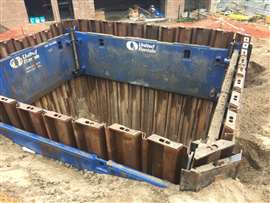 Shoring equipment is one example of a specialty rental business. (Photo: United Rentals)
Shoring equipment is one example of a specialty rental business. (Photo: United Rentals)
“These results were driven by rental revenue across all [Specialty] businesses with a combination of solid same-store sales growth and an additional 15 cold-starts putting us at 72 for the full year”, Matt Flannery told analysts.
“And as a reminder, these specialty cold-starts are a key element to accelerating our growth in this high-return segment.”
Flannery said acquisitions had played a part in that growth, and adding these new specialty product lines through more locations “is another big driver of growth.”
He says United will probably add another “50-plus cold-starts in 2025 to add to that opportunity.”
4. Will there be a reduction in renewables?
The incoming Trump administration has led to discussion about the prospects for wind energy investment and other renewables, as well as investment generally in the power grid.
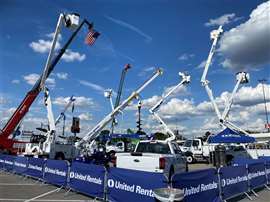 The United Rentals stand at the 2023 Utility Expo. (Photo: IRN)
The United Rentals stand at the 2023 Utility Expo. (Photo: IRN)
Ted Grace said the power and utilities sector represented around 10% of its total revenues; “Within that, solar and wind are a relatively small fraction. So those are not markets that move the needle terribly in our power business.”
Flannery took a positive line and said that regardless of the political environment, there was a need for the grid to continue to be upgraded; “We’re not concerned about this. This is a segment we focus on, and we feel really good about.”
5. H&E and future acquisitions?
Matt Flannery would not be drawn on further details concerning the proposed acquisition of H&E, except to reiterate that it “checks all three boxes we require when evaluating mergers and acquisitions: strategic, financial and cultural.” The deal remains on track for a first quarter close.
Asked about the pipeline for future acquisitions, Flannery said; “we have a very strong team that’s constantly working that pipeline. And I would say it’s been consistently strong for a couple of years now. And as you see, we only execute on a few of them. You could imagine this [H&E] is a pretty big deal. We’ll have a lot to absorb here and that will be our focus.”
He added that if a “nice tuck-in deal comes in, that’s with a new product line, then we’ll have to look at that and see how that fits into the overall strategy, and whether we would want to do that…And there certainly is a period here where we’re going to be focused on absorbing this large acquisition.”
STAY CONNECTED



Receive the information you need when you need it through our world-leading magazines, newsletters and daily briefings.
CONNECT WITH THE TEAM







